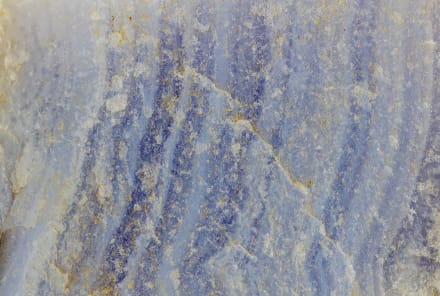Advertisement

When I meet a new patient, one of the first things I do is determine the essential nature of that person. First, I must decipher the most basic, yet critical, piece of information: What is the foundation of this person's mind-body system? The answer to that question is the only way I can help them get in touch with their inner intelligence, which is the true source of everything that comprises—and dictates—their life.
Ayurveda has organized this information into a system of psychophysiological body types. In fact, the word for body type in Sanskrit is prakriti, which literally means "essential nature." Your body type is your blueprint that outlines innate tendencies that have been built into every aspect of your mind-body system. Learning about your Ayurvedic body type will give you useful information on how to reawaken your body's inner intelligence and, more important, take advantage of that intelligence to lose weight.
We use the term mind-body a lot in my world. But the mind and the body are virtually one in the same. Every time there's an event in your mind, there's a corresponding event in your body. Ayurveda looks at the meeting point between mind and body—the place where thought turns into matter. And, according to Ayurveda, this interconnectedness is governed by three operating agents called the doshas.
The doshas essentially facilitate the mind's dialogue with the body.
My patients are often surprised by my ability to arrive at a deep understanding of their characteristics, both biological and psychological, based on a few questions about their eating and sleeping habits. For centuries, cultures have created ways of describing different temperaments, different behavioral attributes, and even risk for disease.
This approach has been replaced by modern medicine in much of the Western world. We didn't have to wait for today's technology, however, to tell us that heart attacks are more commonly seen in barrel-chested, hot-tempered males than in their trimmer, even-tempered counterparts.
Let's take a quick tour of the three doshas: vata, pitta, and kapha. Although they control thousands of separate functions in the mind-body system,they have three basic functions.
Vata is like wind; it controls movement (its qualities are cold, dry, light, mobile, and erratic). Pitta is like fire; it controls metabolism (its qualities are hot, sharp, light, and oily). And kapha is like earth; it controls structure (its qualities are cool, moist, stable, heavy, and dense). Every cell in your body contains all three of these doshas.
Just to stay alive, you need vata, or motion, to breathe, circulate blood, move food through the digestive tract, think and send nerve impulses to and from the brain. You need pitta, or metabolism, to process food, air, and water throughout your body. And you need kapha, or structure, to form muscle, fat, bone, and tendons and ligaments.
Just as there are three doshas, there are three basic types of human constitutions in the Ayurvedic system, depending on which of the doshas is dominant. Everyone is dominated by one, sometimes two, of these doshas. Below is a brief reference guide to the three doshas. Which one best describes you?
Characteristics of Vata Type:
- Light, thin build
- Performs activities and walks quickly
- Irregular hunger
- Poor sleeper
- Enthusiasm, vivaciousness, imagination
- Excitability, changing moods
- Quick to learn new information, but forgetful
- Tendency to worry and overexert
- Tires easily
- Mental and physical energy comes in bursts
- Imbalances associated with vata: accidents, Alzheimer's disease, arthritis, asthma, brittle bones, gas, pain
Characteristics of Pitta Type:
- Medium build and strength
- Sharp hunger and thirst; strong digestion
- Tendency to become angry or irritable under stress
- Fair or ruddy skin, often freckled, with light or red hair
- Enterprising character, likes challenges
- Sharp intellect
- Precise, articulate speech
- Imbalances associated with pitta: heart conditions, skin rashes, blood and liver problems, acid indigestion
Characteristics of Kapha Type:
- Solid, powerful build and strength
- Steady energy; slow and graceful in action
- Relaxed personality; not easily angered
- Cool, smooth, thick, pale, and often oily skin
- Slow to learn new information, but has a good memory
- Heavy sleeper
- Tendency toward obesity; seeks emotional comfort from eating
- Slow digestion, mild hunger
- Affectionate, tolerant, forgiving
- Tendency to be possessive, complacent
- Slow to make decisions; mulls things over
- Imbalances associated with kapha: obesity, depression, cancerous growths, asthma, diabetes
Adapted excerpt from The Hot Belly Diet by Dr. Suhas G. Kshirsagar. Available wherever books are sold.
Watch Next
Enjoy some of our favorite clips from classes
Enjoy some of our favorite clips from classes
What Is Meditation?
Mindfulness/Spirituality | Light Watkins
Box Breathing
Mindfulness/Spirituality | Gwen Dittmar
What Breathwork Can Address
Mindfulness/Spirituality | Gwen Dittmar
The 8 Limbs of Yoga - What is Asana?
Yoga | Caley Alyssa
Two Standing Postures to Open Up Tight Hips
Yoga | Caley Alyssa
How Plants Can Optimize Athletic Performance
Nutrition | Rich Roll
What to Eat Before a Workout
Nutrition | Rich Roll
How Ayurveda Helps Us Navigate Modern Life
Nutrition | Sahara Rose
Messages About Love & Relationships
Love & Relationships | Esther Perel
Love Languages
Love & Relationships | Esther Perel


















